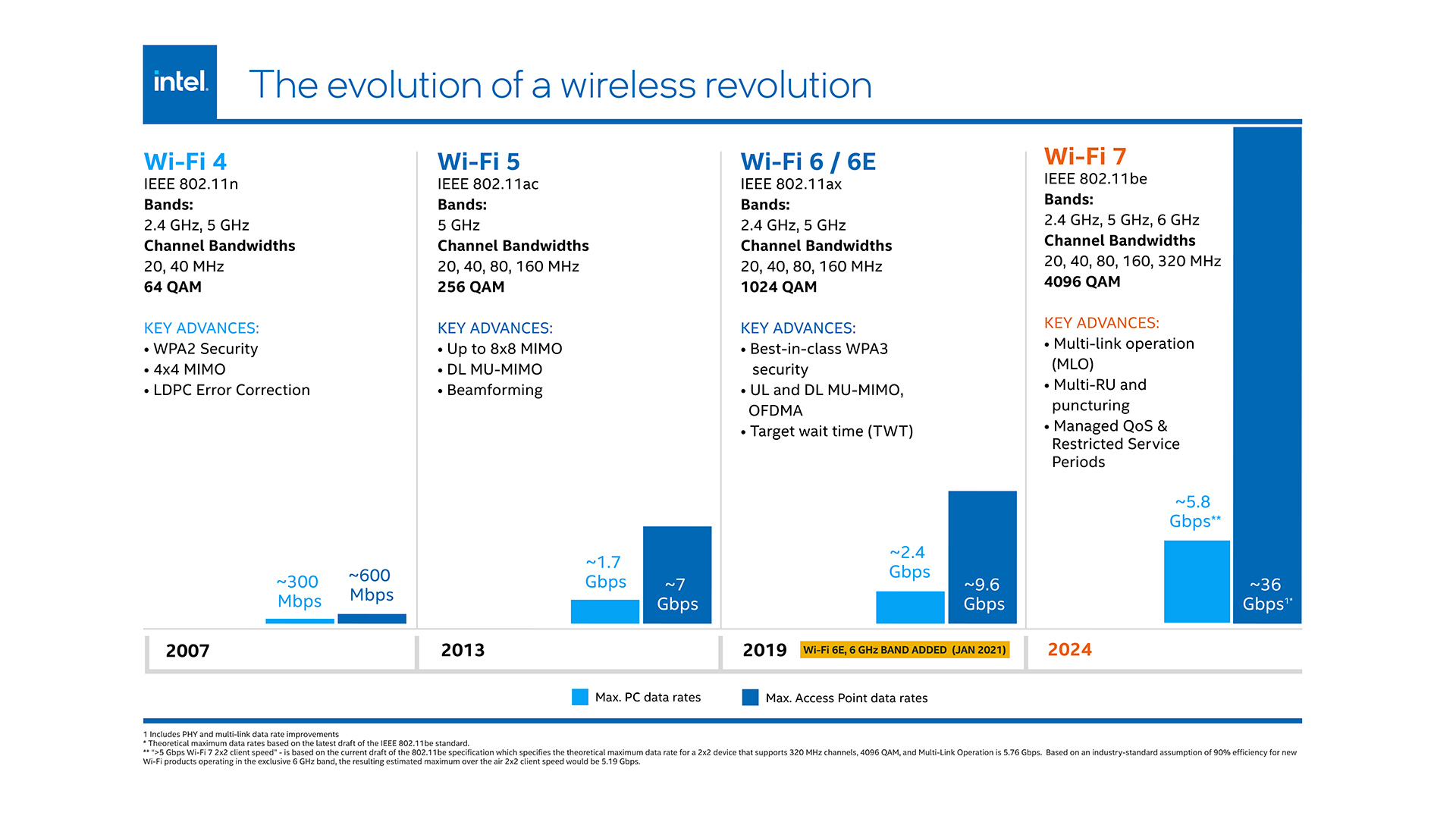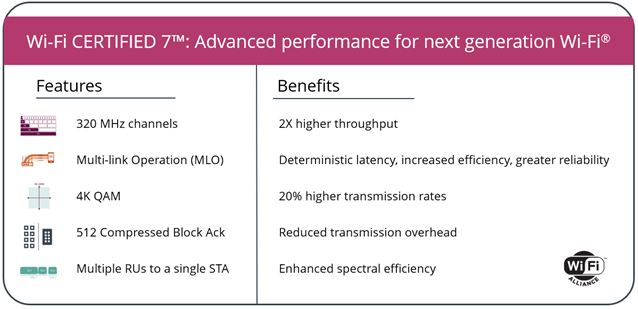

Wi-Fi 7’s theoretical speeds make your Internet connection seem even more sad
source link: https://arstechnica.com/gadgets/2024/01/wi-fi-7-will-use-even-more-of-the-6-ghz-band-for-faster-streaming-lower-latency/
Go to the source link to view the article. You can view the picture content, updated content and better typesetting reading experience. If the link is broken, please click the button below to view the snapshot at that time.
Wi-Fi 7 —
Wi-Fi 7’s theoretical speeds make your Internet connection seem even more sad
More streams, bonded connections, and speeds you can't possibly achieve at home.
Kevin Purdy - 1/8/2024, 8:47 PM

Wi-Fi 7 devices can now be certified by the Wi-Fi Alliance. The new standard can provide higher throughput, linked wireless bands for better stability, and reduced latency. It also can make people who skipped over Wi-Fi 6E feel like they made the smart move.
Wi-Fi 7 has already existed as a thing that expensive, new routers claimed to offer, but now it's a certification they can claim. Wi-Fi 7 devices can use 320 MHz of channel bandwidth, compared to the typical 160 MHz used by Wi-Fi 5, 6, and 6E gear. The new standard is the first to offer Multi-Link Operation, which can bond a connection across 2.4, 5, and 6 GHz connections, offering greater speed and more reliable connections when moving in and out of range of various bands.

As Intel puts it in its explainer, earlier Wi-Fi channels were like moving vans that could "only take one highway at a time and choose alternate routes if they run into traffic. However, Wi-Fi 7 semi-trucks will simultaneously operate across two highways to get more boxes to the destination more quickly."
Then there's Multi-Resource-Unit Puncturing, a deeply inelegant term that yet seems useful. In essence, Wi-Fi 7 allows for unused parts of the higher-speed channels to be used, whereas Wi-Fi 6 and 6E cannot share the richest parts of their 6 GHz spectrum. Intel's house-moving analogy is that Wi-Fi 7 movers can "re-pack most of the semi-truck contents into smaller trucks," then using different lanes on a highway to transport the goods.
Advertisement
All this means that, in ideal and mostly irrelevant circumstances, a Wi-Fi 7 device could achieve a 5.8Gbps connection, presuming several things about all the other parts of that connection. Wi-Fi 7, generally, has a maximum throughput of roughly 36Gbps. Even more theoretically, the new 16×16 MU-MIMO capabilities mean that a Wi-Fi 7 router with 16 antennas could send 16 data streams to 16 devices, even if almost no consumer-level devices or routers will provide that kind of connectivity. Still, the higher ceiling should make for a better general experience.
Before Wi-Fi 7 became official this week, manufacturers were already touting devices that were pending its certification. The TP-Link Archer BE800 (or sometimes BE19000) is the most striking of them, looking like it comes from some hard-edged future and costs $600. Samsung's Galaxy S23 Ultra and its Qualcomm FastConnect 7800 chip have Wi-Fi 7 capability, though Samsung would need to enable it through a software update.
Wi-Fi 6E devices were, for a time, tough to come by due to component shortages lasting through the tail end of the COVID-19 pandemic. It should be a different landscape for Wi-Fi 7, which offers some real upgrade incentives over prior generations. Now, broadband service across the US just needs to catch up.
Recommend
About Joyk
Aggregate valuable and interesting links.
Joyk means Joy of geeK